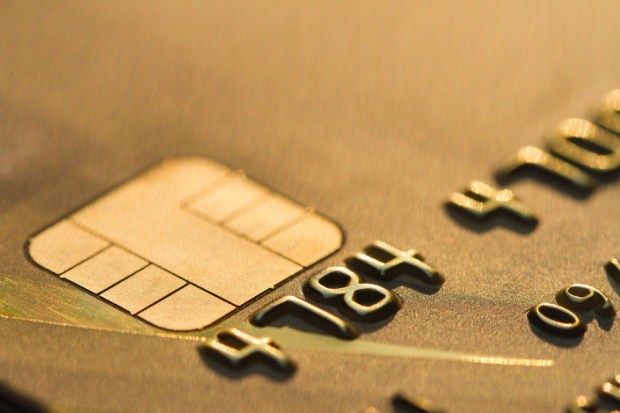Who Needs EMV Anyway?

Why are merchants that are disregarding EMV getting such a bad rap? TSYS helpfully provides the contrary perspective on EMV compliance, offering 5 key points that show how all that’s being risked by ignoring it is … pretty much everything.
SHUTTERSTOCKThe EMV liability shift deadline has come and gone, yet — a few months later — far from every merchant in the U.S. has upgraded to EMV-compliant terminals or POS systems.
While the vast majority of the payments and commerce industry holds the position that the businesses that have failed to get on board with EMV by now are doing themselves and their customers a major disservice — putting both sides of any transaction at great risk for fraud — TSYS has opted to take it easy on those folks, attempting to size up their point of view.
The company has released an infographic entitled “Why You Should Not Become EMV Compliant,” which presents the perspective of merchants who see the implementation of EMV standardized security measures as unnecessary and overrated.
Here, PYMNTS breaks down the 5 key points supporting the argument that merchants shouldn’t bother with EMV:
Patriotism
America: Home of the free, the brave, and — as it stands presently — 47 percent of the world’s credit card fraud.
So what if 76 percent of payment terminals outside the U.S. are EMV compliant? That merely highlights how special we are in the U.S. of A.
Perhaps merchants that are choosing to stick to their guns and refusing to upgrade to EMV-compliant terminals or POS systems view the likelihood that stateside fraud will only continue to rise by comparison as a small price to pay for patriotism. America No. 1!
The Adrenaline Rush
Any merchant can sell a product, but customers want an experience.
And what’s a better experience for a thrill seeker than to hand over his or her sensitive payment data to a merchant that is not EMV compliant, thereby putting himself or herself at risk for being straight up robbed — with every single credit card-based transaction at said merchant?
You can’t put a price on a thrill like that (unless you’re counting the money that could be stolen by cybercriminals, in which case the price is that much money). (Still — what a deal!)
Customers Need To Check Their Privilege
Merchants who refuse to upgrade to EMV are taking a brave stance against that old adage, “the customer is always right.”
Just because a customer doesn’t want to be involved in a data breach, does that mean the merchant has to try to accommodate him or her? Of course not.
The strong-willed, non-EMV-compliant merchants are boldly stating to the overprivileged 69 percent of customers who would be less inclined to do business with an organization that suffered a data breach: “We don’t need your money.”
“You’ve Got To Lose Money To Spend Money”
That’s how that saying goes, right? It’s something like that.
Just ask the merchants who aren’t EMV compliant. Given the financial burden that they will bear in the event of every fraudulent card transaction in the post-EMV-shift world, they’ve obviously got unlimited resources at their disposal.
If you can think of a better place to spend it than to cover losses due to theft, they’d no doubt like to hear your crazy ideas.
Cool Over School
What good ever came from education? Nuthin’ (and don’t spell check that), according to the merchants who aren’t on board with EMV.
To accept chip card transactions on a new EMV terminal means that merchants have to learn a new transaction process: instead of the customer holding a credit card vertically and sliding it at a payment terminal, now he or she has to hold it flat and insert it into the terminal — OMG, that difference in its entirety is so boring and merchants don’t have time for that.
And they’re supposed to also teach it to their employees? That could take minutes. Clearly not worth the immeasurable amount of money and business potentially lost to credit card fraud.
As TSYS proves in its infographic, not upgrading to EMV terminals is easy. That, in a nutshell, is the argument for merchants who don’t want to do it.
Of course, should merchants see that ease outweighed by the massive financial penalties, loss of customers and reputation, and perhaps the eventual closure of their businesses that could result from not upgrading to EMV, TSYS also provides a collection of EMV resources that can help them avoid those pitfalls.
But that’s only, mind you, for merchants that are into things like “helping customers” and “making money” and “staying in business” and all that.
Tomato, tomahto.*
*Non-EMV-compliant merchants are the ones who say “tomahto” in that analogy, and no one says “tomahto.”
